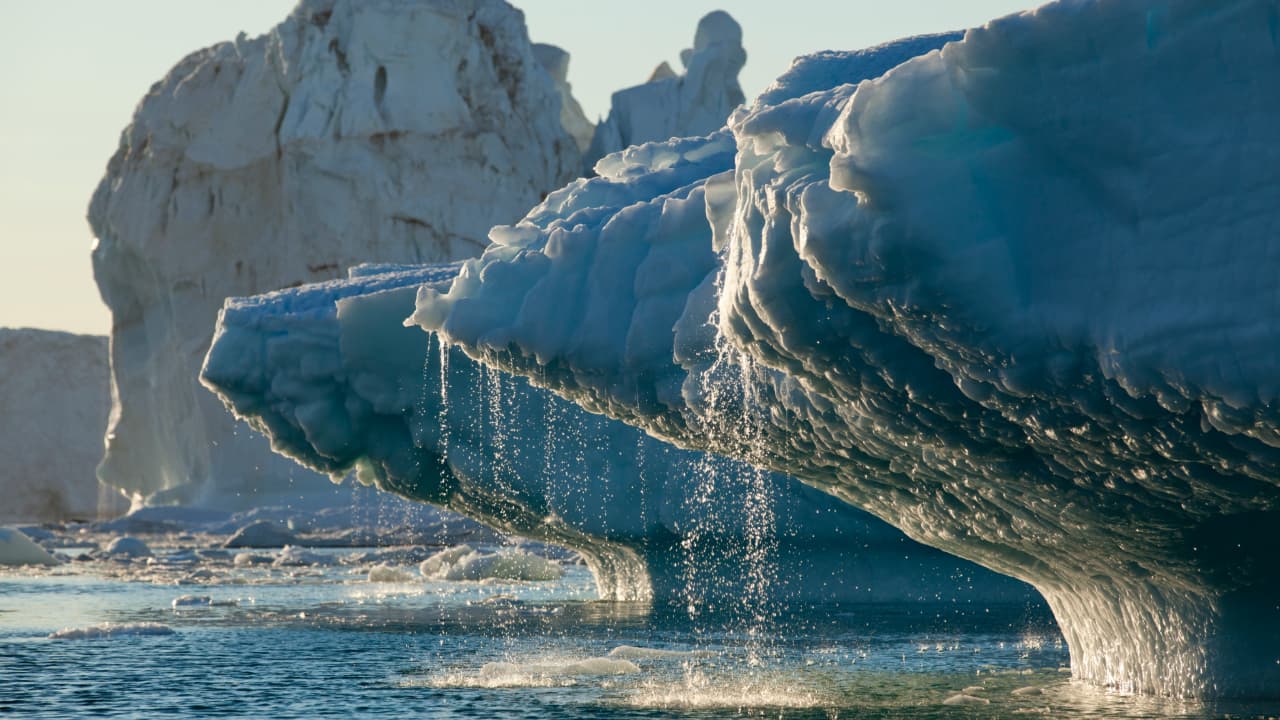Melting glaciers in Greenland are releasing freshwater into the ocean, stirring up deep-sea nutrients. This phenomenon could have significant impacts on the marine food chain and even climate change. Learn more about this fascinating research.
Powerful Phytoplankton
Phytoplankton, the tiny organisms boosted by glacial runoff, produce 50% of Earth’s oxygen. And that’s fascinating.
Greenland’s massive ice sheets are melting at a high rate due to rising temperatures. Surprisingly, it’s not just increasing the sea levels but it’s also helping to feed tiny ocean organisms that play a huge role in the marine food chain and even fighting climate change. A recent study has found that the freshwater runoff from melting glaciers in Greenland is stirring up nutrients from deep in the ocean. And these nutrients are helping phytoplankton to thrive. These are microscopic plant-like organisms that live in the ocean and form the base of the marine food web.
How Melting Ice Helps Ocean Life
Reports suggest that Greenland is losing around 293 billion tons of ice. In summer, a glacier called Jakobshavn (or Sermeq Kujalleq), the most active one in Greenland, releases over 300,000 gallons of freshwater per second into the ocean.
As this huge amount of freshwater rushes into the sea, it rises and pulls up nutrients like nitrate and iron from the deeper parts of the ocean. These nutrients are essential for phytoplankton, especially during summer when other sources have already been used up by spring blooms.
Phytoplankton are important as they absorb carbon dioxide from the air and provide food for small creatures like krill, which are then eaten by fish, whales, and other marine animals.
A Supercomputer “Laboratory”
To understand what’s happening beneath the ice and ocean, scientists used an advanced computer model developed by NASA’s Jet Propulsion Laboratory (JPL) and the Massachusetts Institute of Technology (MIT). The model, called ECCO-Darwin, uses billions of pieces of data collected over the past 30 years, everything from ocean temperature and salt levels to pressure at the seafloor.
The researchers focused on one specific fjord (a narrow sea inlet) near Jakobshavn Glacier. Because simulating all the chemistry, physics, and biology involved is incredibly complex, they created a “model within a model” to zoom in on this small area in detail.
With the help of NASA’s powerful supercomputers, they found that the deep-sea nutrients pulled upward by the glacial melt could increase phytoplankton growth by 15 to 40% in that area during summer.
What It Could Mean for Ocean Life
Researchers say it’s too early to know exactly how this will play out in the future. This boost in phytoplankton might benefit marine animals and possibly even local fisheries around Greenland.
This study focused on just one glacier in Greenland, but there are over 250 glaciers around the island. The researchers plan to expand their study to cover the entire Greenland coastline and possibly other regions too.
Michael Wood, one of the study’s lead researchers, said: “We didn’t build these tools for one specific application. Our approach is applicable to any region, from the Texas Gulf to Alaska. Like a Swiss Army knife, we can apply it to lots of different scenarios.”
Even though this study focuses on the Arctic, its findings affect the entire planet. Phytoplankton are vital for Earth’s climate and ecosystems. They produce about half of the oxygen we breathe and play a major role in removing carbon dioxide from the atmosphere. So, while melting ice is a sign of a warming planet, it’s also triggering surprising changes in the ocean that we’re only beginning to understand.
